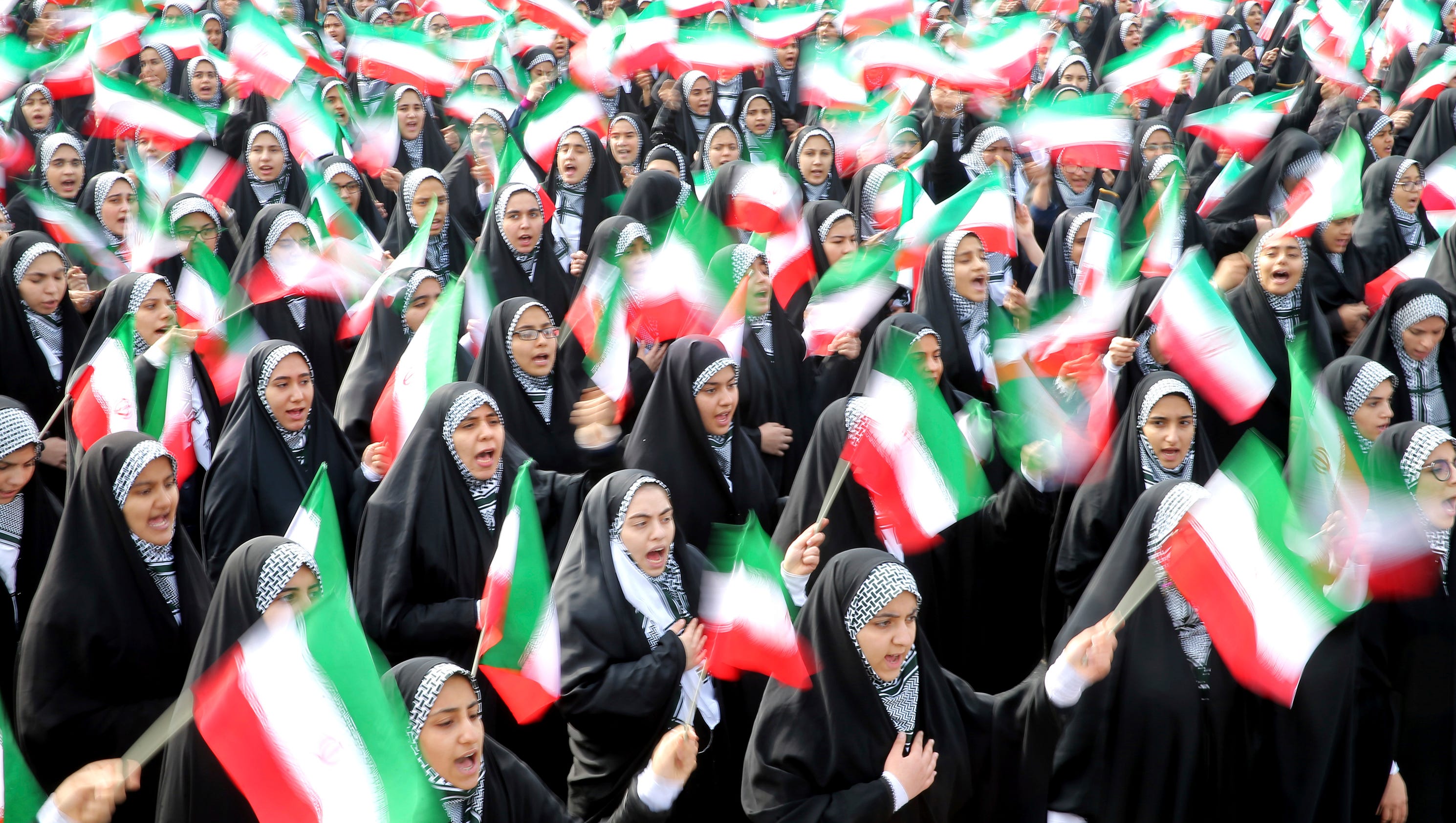The 1979 Islamic Revolution: Reshaping Iran & Beyond
Table of Contents
- The Seeds of Discontent: Unrest Under the Pahlavi Dynasty
- The Shah's Departure and Khomeini's Triumphant Return
- The Birth of the Islamic Republic: A New Constitution and Supreme Leader
- Global Shockwaves: The Hostage Crisis and International Fallout
- Transforming Iran: Societal and Cultural Shifts
- The Revolution's Enduring Legacy: Internal and External Perceptions
- Key Moments Leading Up to Iran’s 1979 Islamic Revolution
- The West's Role: Historical Context and US Engagement
The Seeds of Discontent: Unrest Under the Pahlavi Dynasty
The Pahlavi dynasty, which began with Reza Shah in the 1920s, had sought to modernize and secularize Iran, often at the expense of traditional religious values and political freedoms. Reza Shah promoted the idea of 2,500 years of Persian monarchy, attempting to forge a national identity separate from the country's Islamic heritage. His son, Mohammad Reza Pahlavi, who succeeded him in the early 1950s, continued this autocratic rule. While the Shah initiated significant economic development and social reforms, his close ties to Western powers, particularly the United States, and his increasingly repressive regime fueled widespread discontent among various segments of Iranian society. Religious leaders, in particular, grew increasingly critical of the Shah's Westernization policies, which they viewed as an assault on Islamic values. This simmering resentment began to boil over into open unrest. On January 7, 1978, religious riots broke out in the holy city of Qom, marking a significant escalation in the opposition movement. These protests, often met with brutal force by the Shah's security forces, only served to galvanize the opposition and amplify the calls for change. The Shah's autocratic rule and the suppression of dissent created an environment ripe for revolution, setting the stage for the dramatic events of 1979.The Shah's Departure and Khomeini's Triumphant Return
The year 1979 opened with a nation on the brink. The unrest had become uncontrollable, and the Shah's grip on power was slipping. Facing immense pressure and widespread protests, Mohammad Reza Shah Pahlavi left Iran on January 16, 1979, ostensibly to receive cancer treatment overseas. This departure marked a pivotal moment, signaling the effective end of the Pahlavi dynasty's rule. Shapour Bakhtiar, appointed by the Shah as his new prime minister with the help of supreme army councils, couldn't control the situation in the country anymore. His government struggled to maintain order amidst the revolutionary fervor. Just over two weeks later, on February 1, 1979, Ayatollah Ruhollah Khomeini, who had been in exile for over 14 years, made a triumphant return to Iran, descending from a chartered Air France Boeing 747 into a city on the cusp of revolution. His arrival ignited further revolutionary zeal. Ten days later, Bakhtiar went into hiding, eventually finding exile in Paris. The Iranian army, recognizing the overwhelming popular support for the revolution, declared its support, effectively sealing the fate of the old regime. This sequence of events — the Shah's departure, Khomeini's return, the collapse of the interim government, and the army's alignment with the revolution — culminated in the overthrow of the ruling Iranian monarch, Shah Mohammad Reza Pahlavi, on February 11, 1979. This was the beginning of the Iranian Revolution.The Birth of the Islamic Republic: A New Constitution and Supreme Leader
With the Shah overthrown and Ayatollah Khomeini firmly in control, the immediate task was to establish a new political order. On April 1, 1979, Khomeini declared Iran an Islamic Republic, a move that fundamentally transformed the state's identity. This declaration was swiftly followed by a national referendum held in April 1979, where Iranians voted overwhelmingly to establish an Islamic Republic. This popular mandate solidified the revolutionary changes. A new constitution was subsequently adopted, and Ayatollah Khomeini became the Supreme Leader of the Republic of Iran. This new theocratic constitution, approved in December 1979, enshrined the principle of *Velayat-e Faqih* (Guardianship of the Islamic Jurist), placing ultimate political and religious authority in the hands of the Supreme Leader. This marked a radical departure from the secular monarchy, establishing a unique form of governance based on Islamic jurisprudence. The revolution led to the establishment of a state where religious clerics held significant power, fundamentally altering the fabric of Iranian society and governance.Global Shockwaves: The Hostage Crisis and International Fallout
The 1979 Islamic Revolution in Iran did not merely reshape the country internally; its effects reverberated globally, profoundly impacting international relations, particularly with the United States. One of the most defining and enduring consequences was the takeover of the U.S. Embassy in Tehran. In November 1979, a group of Iranian protesters seized hostages at the U.S. Embassy. This event, which lasted 444 days, became known as the Iran hostage crisis. For Washington, the revolution represented a devastating strategic loss, as Iran had been a key ally in the region. The hostage crisis further exacerbated tensions, leading to decades of strained relations between Iran and the West. The images of Iranians burning the US and Israel flags, such as during a ceremony marking the 35th anniversary of the 1979 Islamic Revolution in Tehran in 2014, became iconic symbols of the new anti-Western stance of the Islamic Republic. This event cemented a deep-seated animosity and distrust, shaping foreign policy decisions and regional dynamics for years to come. The revolution's global impact underscored its unique nature, as it was not just a domestic upheaval but a geopolitical earthquake.Transforming Iran: Societal and Cultural Shifts
The establishment of the Islamic Republic brought about profound societal and cultural transformations within Iran. The new leadership, spearheaded by the clerics and the militias they supported, immediately began to suppress Western cultural influence, which had flourished under the Shah's secularizing policies. This included strict enforcement of Islamic dress codes, segregation of sexes in public spaces, and the banning of Western music, films, and literature deemed un-Islamic. The revolution aimed to purify Iranian society, aligning it with Islamic principles as interpreted by Ayatollah Khomeini and the new religious establishment. This meant a significant shift in daily life for ordinary Iranians, from education and media to legal and social norms. The suppression of Western cultural influence was a deliberate effort to assert an independent, Islamic identity for the nation, contrasting sharply with the Shah's vision of a modern, Westernized Iran. This internal transformation was as significant as the political change, fundamentally altering the social fabric of the country.The Revolution's Enduring Legacy: Internal and External Perceptions
Forty years have now passed since a mass political movement resulted in the 1979 Islamic Revolution in Iran, and its legacy continues to shape both internal Iranian politics and its external relations. Globally versus internal perceptions of the revolution often differ dramatically. Internally, for many Iranians, the revolution represents a liberation from an autocratic monarchy and a reassertion of national and religious identity. However, for others, it signifies the imposition of a rigid theocratic system and the suppression of individual freedoms. Externally, the revolution is largely viewed through the lens of its impact on regional stability and international security. It spawned a unique model of governance, challenging traditional notions of statehood and power in the Middle East. The dynamics of the Iranian Revolution continue to influence political movements and religious fundamentalism across the globe. How the autocratic/theocratic dust settles remains to be seen, but the one revolution in the region that signaled an indisputable sea change was Iran’s 1979 Islamic Revolution, whose 35th anniversary was marked by continued global attention. The currents of this watershed event continue to be felt today, making it a critical subject for historical and geopolitical analysis.Key Moments Leading Up to Iran’s 1979 Islamic Revolution
The path to the 1979 Islamic Revolution was paved by a series of escalating events that ultimately led to the downfall of the Pahlavi dynasty. While the revolution's origins are complex, several key moments stand out: * **Religious Riots in Qom (January 7, 1978):** These riots, breaking out in the holy city of Qom, marked a significant escalation of religious opposition to the Shah's regime. * **Shah Mohammad Reza Pahlavi's Departure (January 16, 1979):** The Shah left Iran for cancer treatment, a move that effectively signaled the end of his reign and created a power vacuum. * **Ayatollah Khomeini's Return (February 1, 1979):** Khomeini's return from exile galvanized the revolutionary movement and provided a clear spiritual and political leader for the masses. * **Collapse of Bakhtiar's Government (February 11, 1979):** The Shah's appointed prime minister, Shapour Bakhtiar, went into hiding, and the army declared its neutrality, paving the way for the revolutionaries to take full control. * **Declaration of the Islamic Republic (April 1, 1979):** Khomeini officially declared Iran an Islamic Republic after a popular referendum. * **U.S. Embassy Hostage Crisis (November 1979):** A group of Iranian protesters seized the U.S. Embassy, initiating a long and impactful standoff that redefined Iran's relationship with the West. These events, among others, coalesced into the sweeping transformation that was the 1979 Islamic Revolution, permanently altering Iran's trajectory and its place in the world.The West's Role: Historical Context and US Engagement
Understanding the 1979 Islamic Revolution also requires acknowledging the historical context of Western, particularly American, involvement in Iran. A quarter-century before the 1979 revolution, the US and UK helped depose democratically elected Iranian Prime Minister Mohammad Mossadegh in 1953. This coup, orchestrated by the CIA, reinstated the Shah to power, a move that deeply scarred Iranian national memory and fueled anti-Western sentiment. In 1953, over two decades before the Islamic Revolution in Iran, the CIA played a direct role in shaping Iran's political landscape. This historical intervention contributed to the perception among many Iranians that the Shah was a puppet of Western powers, particularly the United States. Despite this, the US had extensive contact with Ayatollah Khomeini before the Iran Revolution, indicating a complex and often contradictory engagement. America's secret engagement with Khomeini before his return to Iran suggests a nuanced understanding of the unfolding events, even if the ultimate outcome represented a devastating strategic loss for Washington. The West's role, therefore, is not merely a footnote but an integral part of the narrative surrounding the Pahlavis' triumph and tragedy and the eventual rise of the Islamic Republic.Conclusion
The 1979 Islamic Revolution in Iran was a watershed event that profoundly reshaped Iran's destiny and left an indelible mark on global geopolitics. From the overthrow of the Pahlavi monarchy to the establishment of the Islamic Republic under Ayatollah Khomeini, the revolution was a complex interplay of religious fervor, political discontent, and a deep-seated desire for national self-determination. It demonstrated that revolutions are not solely driven by economic factors, but can be ignited by powerful cultural and ideological forces. The revolution's effects, including the enduring U.S. Embassy hostage crisis and the subsequent decades of tense relations with the West, continue to resonate today. Understanding this pivotal moment is crucial for anyone seeking to comprehend the complexities of the Middle East and the dynamics of international relations in the 21st century. We encourage you to delve deeper into the history of this transformative event and share your thoughts in the comments below. What aspects of the 1979 Islamic Revolution do you find most impactful? Explore more articles on our site to further your understanding of global historical events.
Iranians celebrate 38th anniversary of the Islamic Revolution

La Revolución Islámica y el último shah de Morelos | Tierra Adentro

Life in Iran before the 1979 Islamic revolution | The Week